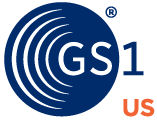Consumers shopping via multiple channels have created an ever-increasing demand for product images and data attributes. However, the lack of standards has made the sharing of this information between trading partners quite challenging. These best practices were created in collaboration with representatives from leading North American general merchandise and apparel vendors, retailers, and solution providers to help the industry create, manage and supply product images and data attributes for commerce applications across retail operations.
These best practices include detailed information to name, identify, manage, locate, and acquire images. It also has over 350 attributes covering 6 product categories: Apparel, Footwear, Jewelry, Fashion Accessories, Beauty, and Home.
Guidance For Using Image Section of the PDF
- Review Section 2.2 which provides guidance on Still Shot Product for Single Items, the most common type of image provided.
- Read Section 2.3 to review 360 and Montage images.
- Read Section 2.4 discussing Image File Naming conventions and standards.
- Section 2.5 to review Meta Data of images, including Mandatory and Optional information when trading image data with your business partners.
Guidance For Using For Attribute Section of the PDF
- Representatives from the brands and retailers who helped developed these best practices deemed specific attributes as “essential.” for item set-up and eCommerce. Attributes were reviewed by product category at the Global Product Classification (GPC)/Brick level to determine if that attribute is essential for that product. For a complete matrix of essential attributes by GPC click here.
- Section 3.2 provides a matrix showing the attributes that are possibly appropriate for your type of merchandise. It is important to refer to Section 3.4 and 3.5 for complete definitions.
- Read Section 3.4, which reviews the e-commerce Extended Consumer Product Attributes that are generally applicable to all merchandise categories covered in this guideline.
- Read Section 3.5, which reviews the E-Commerce Extended Consumer Product Attributes for all remaining attribute definitions, examples, and data types. Section 3.6 provides the code lists for the extended attributes.
- Sections 3.8, Section 3.9, and Section 3.10 provide additional guidance, including examples of using attributes in a webpage, mapping of the attributes in Electronic Data Interchange (EDI), and a spreadsheet for exchanging information.

